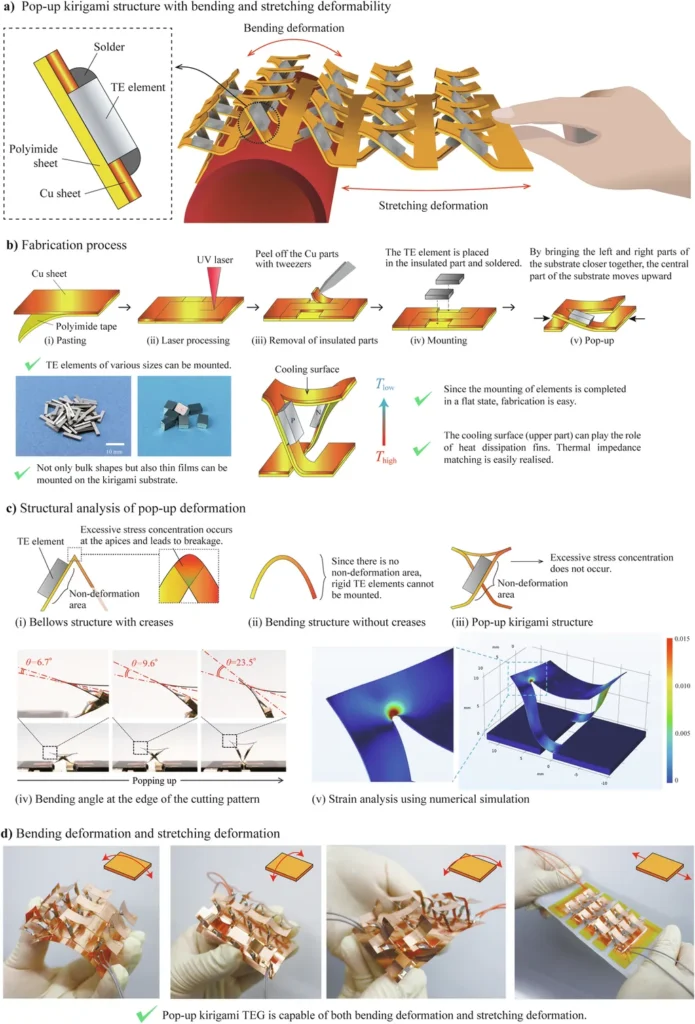In a breakthrough that could reshape the landscape of wearable technology and Internet of Things (IoT) devices, researchers have developed a novel thermoelectric generator (TEG) that is both highly flexible and stretchable. This innovation, published in the journal *npj Flexible Electronics* (translated as “Flexible Electronics”), addresses a critical challenge in the energy sector: harnessing the power of curved heat sources efficiently.
The lead author of the study, Shingo Terashima from the Department of Applied Mechanics and Aerospace at Waseda University in Tokyo, explains the significance of this development. “Most heat sources in our environment have curved surfaces,” Terashima notes. “Our pop-up kirigami TEG can conform to these surfaces, making it ideal for applications where traditional rigid TEGs fall short.”
The key to this innovation lies in the use of a pop-up kirigami structure. Kirigami, a variation of the traditional Japanese art of paper folding (origami), involves cutting and folding paper to create intricate designs. By applying this technique to the substrate of the TEG, the researchers were able to create a device that is not only bendable but also stretchable. This flexibility allows the TEG to maintain conformable thermal contact and cooling surfaces, even when applied to curved heat sources.
The implications for the energy sector are profound. Traditional TEGs have struggled to adapt to the curved surfaces found in many real-world applications, limiting their effectiveness. The pop-up kirigami TEG, however, overcomes this limitation, offering higher output power compared to conventional flexible TEGs. This enhanced performance could open up new possibilities for powering IoT sensors and wearable devices, which often rely on small, curved heat sources.
One of the most compelling demonstrations of the pop-up kirigami TEG’s potential is its ability to capture changes in human body temperature when attached to the skin. This capability could revolutionize the field of wearable health monitoring devices, providing a reliable and efficient power source for continuous health tracking.
As the world moves towards a future dominated by IoT and wearable technology, the need for flexible and efficient power sources has never been greater. The pop-up kirigami TEG represents a significant step forward in meeting this need, offering a versatile and high-performance solution for a wide range of applications.
The research team’s work is a testament to the power of interdisciplinary innovation, combining principles from materials science, mechanical engineering, and traditional art to create a device with real-world impact. As Terashima puts it, “This development is not just about improving technology; it’s about enabling new possibilities.”
With the publication of this research in *npj Flexible Electronics*, the stage is set for further advancements in the field. The pop-up kirigami TEG could soon become a cornerstone of the energy solutions for the next generation of smart devices, shaping the future of the energy sector in ways we are only beginning to imagine.

